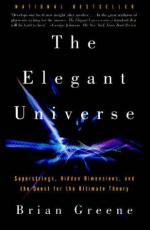
|
| Name: _________________________ | Period: ___________________ |
This quiz consists of 5 multiple choice and 5 short answer questions through Chapter 4, Microscopic Weirdness.
Multiple Choice Questions
1. Quantum physics began with the study of the energy inside a heated, closed container, such as an oven. The problem with theories at the time was that they predicted that _____.
(a) The oven can store more energy the smaller it is.
(b) The oven contains infinite energy.
(c) The oven can only store energy if it has no mass.
(d) The oven contains no energy.
2. Which of the following correctly describes the structure of an atom?
(a) A cloud of electrons orbiting a dense nucleus.
(b) A cloud of protons, each with an electron orbiting it.
(c) A cloud of neutrons orbiting a nucleus of other particles.
(d) A single nucleus composed of both electrons and protons.
3. What is the fundamental particle, the smallest possible bundle of energy, for the electromagnetic force?
(a) The electron.
(b) The gluon.
(c) The neutrino.
(d) The photon.
4. When the distance between two objects is doubled, what happens to the strength of the gravitational pull between them?
(a) It is unchanged.
(b) It diminishes to one-half its original value.
(c) It quadruples.
(d) It diminishes to one-fourth its original value.
5. What characteristic of the string determines the properties of the particle it represents?
(a) Its mass.
(b) Its frequency of vibration.
(c) The number of other strings with which it is threaded.
(d) Its length.
Short Answer Questions
1. What property did the double-slit experiment demonstrate that light has?
2. What rule did Max Planck discover the electromagnetic waves bounded in a container, such as an oven, must follow?
3. If a clock were accelerated to nearly the speed of light for a year's time, which of the following would be true of its reading at the end of that time?
4. What type of a wave is light?
5. According to general relativity, which of the following is said to warp or bend space-time?
|
This section contains 419 words (approx. 2 pages at 300 words per page) |

|




